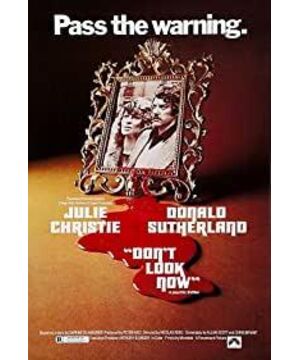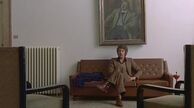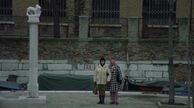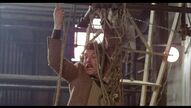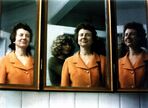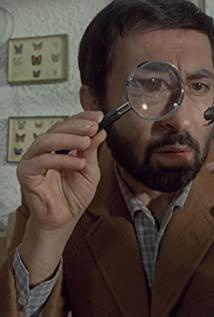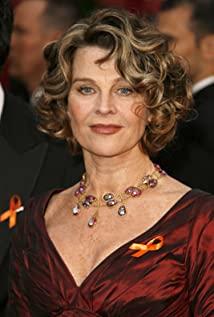In the fall of the previous year, I read the original short story "Don't Look Now" by Daphne Du Maurier (also the author of "Butterfly Dreams") and marveled at the perfect structure of the story, the looming plot, and the textbook-like Freud at the end The formula "the return of the repressed" (the return of the repressed). I still remember that when the results of the general elections were out that night, I was sitting in the brightly lit library with everyone, and looking at the computer screens, there were ballot statistics charts for the fifty states. After reading this story, the result of the general election was announced. On the way back to the dormitory, the cold and humid weather in November and the depressing atmosphere on campus seemed to be particularly suitable.
Daphne du Maurier, lesbian doubles, and queer time
At that time, the class was called Lesbian Immortal, and the main topic was queer temporality. Although this element was already present in many of the materials I read at that time, I didn’t really grasp the concept until I finished this lesson: borrowing the pun of the word queer itself (semantic "strange" and sexual orientation/gender expression) The "abnormal"), queer temporality (strange temporality) refers to the abnormal time processing (queer time) that queer subjects often encounter in the expression of artistic works. Throughout history, same-sex literature has always been rare. In many cases, queer characters do not appear in the story as queer openly, but retreat into a looming queerness—one of them. This way of expression is distorted time. Take "Don't Look Now" as an example, the whole story does not show any "sexually abnormal" characters: the protagonists John and Laura are a couple. If you talk about the characters implied as being queer, you can count about two older sisters: the two sisters in the original novel are twins, although they are not homosexual, they appear in the image of dopplegänger (repetition/dualism), and the double symbol symbolizes queerness. ; In the movie, the two people just claim to be sisters, instead of choosing twin actors, which actually adds to the suggestion that the relationship between the two is a same-sex partner. In one of the scenes, when the blind sister entered the trance, she had to say that her demeanor, movements, and voice were somewhat sexual. Then it was connected that when John called the police that his wife was with two old sisters, the police asked him, "Are you afraid? What is it?" This scene is even more suspicious.
In addition, in terms of plot, the second half of the movie was developed by John seeing his wife and two old sisters on the boat. At the end, the audience realized that John actually saw the future-and died. s future. As the blind sister said, in fact, John himself has foresight, even though he does not know it, and misunderstood the future tense for the present, this caused a series of turmoil to and from the police station, which indirectly led to his final die. In this way, time and causality are strung together into a circle, which can even be said to be a self-fulfilling prophecy.
Nicholas Roeg, adaptation, and visual motifs
I wrote Don't Look Now on the final paper of this class. When I searched for information, I found that there were only a handful of papers analyzing the original novels. Instead, many wrote Nicolas Roeg's 1973 film adaptations. This Nicholas Roeg also directed "The Man Who Fell to Earth" (The Man Who Fell to Earth) starring David Bowie, a movie that I had a bad impression of, so I never watched this Don't Look Now until A while ago, I heard film critic Mark Kermode say that this is a movie he thinks is very "perfect". After watching the film adaptation, my subjective feeling is that the director really did the "adaptation" to the extreme, and fully utilized the expression ability of all aspects of the film form: vision, sound effects, and editing. "Adaptation" has never been about being faithful to the original, and there is no need to use it as a standard to measure the quality of the film; a more interesting interpretation is to use the original as a springboard, and how to explore and innovate on existing elements when watching a movie. "In fact, with this film’s status in the British film critics (in 2011, Time Out London rated it as the number one in the "100 Best British Films"), I am afraid that not many people will start from the perspective of "comparison with the original." ."
The film version of the biggest feature is that it takes full advantage of this form of expression movie, the novel deja vu (deja vu) atmosphere done thoroughly. The deja vu theme is shown in the original book: John sees the little girl in the image of his daughter, the couple keeps running into two sisters everywhere, and keeps getting lost and ghosts hitting walls in Venice-or they have walked a lot. Back to the original point, either taking a different route but coming to the same alley from the other direction. In the movie, deja vu has become ubiquitous . This should start from the opening stage-now I don’t go to school, I don’t have to do a sequence analysis, but in general, this scene has laid a foundation for the understanding of the whole movie, because many of them can be used later. Corresponding elements and motives (motif):
1) Water elements, which come out of the blood , red , raincoats , and reflection . There is no such paragraph in the novel, nor does it explain how the daughter died; the movie adds a drowning plot, which not only introduces the motivation of the water, but also hints at John’s predictive ability-water splashing photos, the back of the daughter wearing a red raincoat A bloody fluid came out, and John ran to his daughter for the unknown sign, even though it was too late. In addition to the daughter in the red raincoat, and the murderer dwarf who later wore the same red raincoat, more interesting are the red boots worn by Laura and the green raincoat of the blind sister. They all look very similar in material to the red raincoat—yes. A visual repetition. 2) The element of music : a piano piece that seems to be played by a child who is new to music. The original soundtrack is called "John's Theme", and it appears three times afterwards. This is also a commonly used technique in the creation of film soundtracks: composition motivation (leimotif) is a short piece of music linked to a specific theme or character, and several slightly different versions have been developed on this basis, such as major/minor changes. , Rhythm adjustment, instrument arrangement, etc. 3) Elements of the church . The film emphasizes Christian elements from time to time: John is not on vacation in Venice, but as an engineer/architect to renovate the church and deal with the priest; the background of Christine's photo is set in the church, and the blood spreading scenes and The scene of John's own death at the end of the movie echoes.
Accompanying deja vu (deja vu) is a strong sense of uneasiness (uncanny). Before analyzed uncanny / unheimlich Freud's theories too many times, not much to say here; generally start is uncanny and queer often linked, and the subconscious compulsive repetition (compulsive repetitions) brings uncanny. The novel does not have any description of Christine, she always is absent (absence) of the existing status, while the female dwarf recognize John as his daughter was unconscious subjective projection (projection). As a story told from the subjective standpoint of John, it can be said that Christine's death is actually a deeply buried and oppressed memory, and the murderous dwarf at the end is a devilish "return of the repressed" Incarnation. In the movie, this correspondence and duality (twin sisters, daughter/murderer) evolved into a recurring multiplicity , continuous re-seeing and re-encountering/foreseeing, using images such as reflections and photos / object.
View more about Don't Look Now reviews


